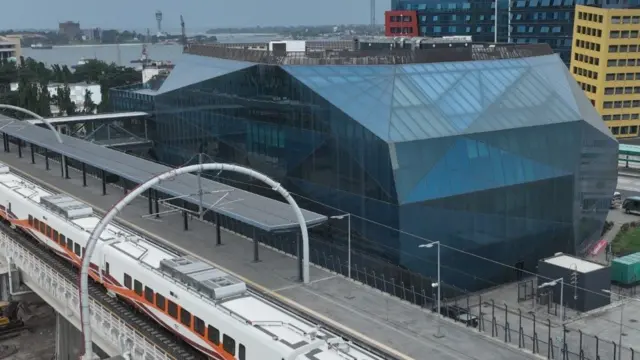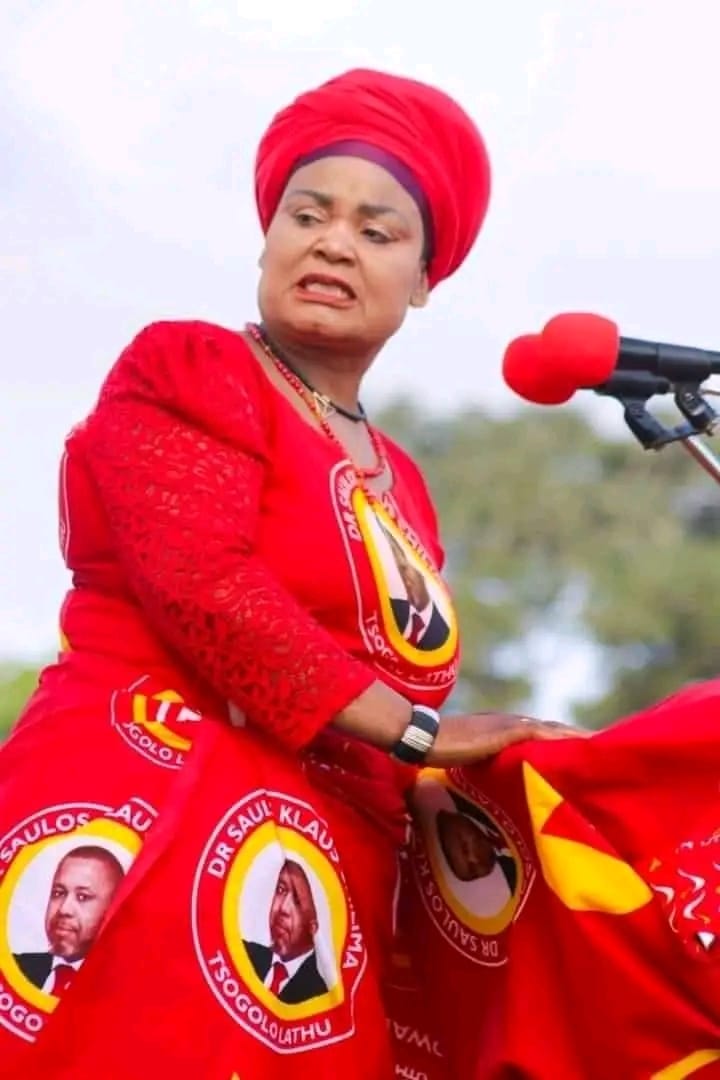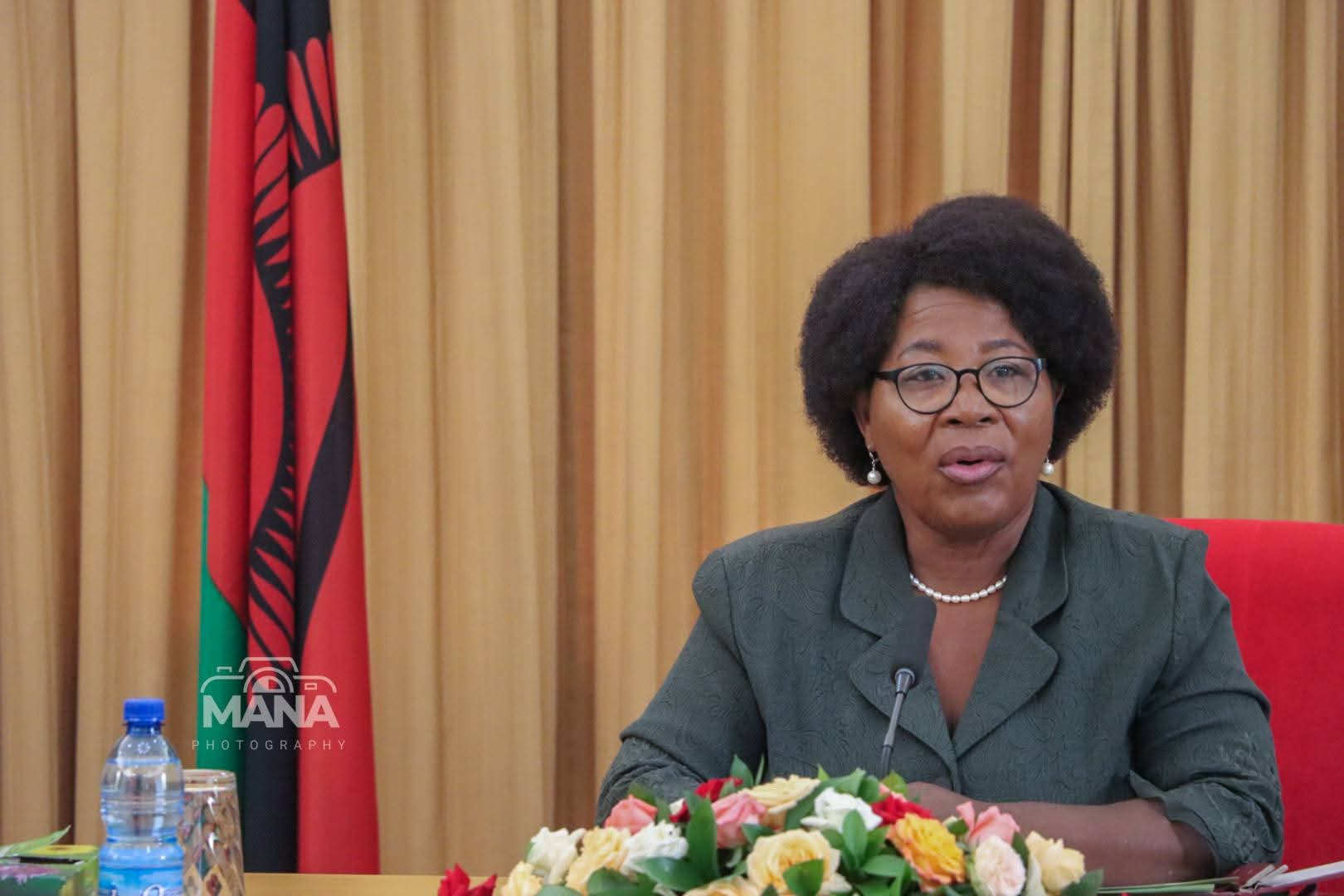Shaped and coloured like the country’s rare gemstone, tanzanite, the sparkling new railway terminal in Dar es Salaam is a symbol of Tanzania’s transport ambitions.
The glass panels gleam in the sun, like an outsize version of the prismatic bluish-purple gem that glitters in the light.
The trains – powered by electricity, a first for the region – carry passengers from the commercial hub to the capital, Dodoma, in less than four hours, half the time it takes by road.
It marks the starting point of one of the country’s strategic projects – the building of a 2,560km (1,590-mile) Standard Gauge Railway (SGR) envisaged to connect key cities and link up with neighbours Burundi, Rwanda and the Democratic Republic of Congo.
The 460km (285-mile) Dar es Salaam to Dodoma leg has been open since August, when President Samia Suluhu described the railway as “a pathway to our future” that would “enhance our standing in the region”.
In Dodoma, the station is another grand building, resembling the rocky hills around the city – an effort to blend the country’s natural heritage with modernity.
It is a reluctant capital. In the middle of the country, it was first designated the centre of power 50 years ago, but it took the strong-willed late President John Magufuli to force government bodies to relocate.
But as most commercial activity, and even some government work, continues in Dar es Salaam, a fast and efficient transport link between the cities has been seen as vital.
The electric train has also made it smooth and convenient for the ordinary Tanzanian. A far cry from the experience on the road or the older slower, narrower train that this service replaces.
Inside the train carriage, the seats are clean, comfortable and reclinable. There is a foldable tray table attached to each one. A member of the train crew is on hand to sell hot and cold drinks as well as snacks.

In economy class there are five seats in each row, three on one side of the aisle and two on the other. In the business and luxury (royal) classes there are two seats on either side of the row, offering more comfort and legroom.
“We are grateful, we are not tired,” Gloria Sebastian who lives in Dar es Salaam, tells the BBC during a trip to visit her family in Dodoma. She is happy about the convenience that the train provides.
And she is not alone.
The man who is overseeing the building and operation of the SGR service says at least 7,000 passengers travel on the eight daily services on the line, which is already approaching capacity.
Machibya Masanja tells the BBC that the demand has been so high that “we cannot meet it with those trips we are making per day. We expect the number [of passengers] will double or triple.” There are plans afoot to add more journeys.
The popularity means that advance planning is essential as services can be fully booked several days in advance.
Payment must be made within an hour of booking in order to reserve a seat. An economy class trip to Dodoma costs a reasonable 40,000 Tanzanian shillings ($15; £11), while going business class will set you back 70,000 shillings ($26).
The early morning service leaves Dar es Salaam at 06:00 but people are required to turn up two hours earlier for security checks.
The inside of the tanzanite-shaped building resembles an airport terminal. Passengers queue up and go through thorough checks just like in an airport. The luggage is scanned and people are sometimes frisked before accessing the boarding lounge.
One man later told the BBC that he felt the intense scrutiny seemed unnecessary, and there does not seem to have been any direct security threat, but the atmosphere is good-natured.
Nevertheless, there is an edginess from officials evidenced by the fact that a police officer questioned the BBC team who were taking pictures at the terminal – but they were quickly cleared after some checks.
The boarding was calm and orderly and the train pulled away on time.
Gathering speed – the trains currently hit a maximum of 120km/h (75mph) but can go faster – it was soon whizzing through the outskirts of Dar es Salaam as the early morning sun began to illuminate the panoramic view.
We cross a vast countryside – scrub and grassland plains interspersed with views of lush farms – and pass a meandering river, craggy terrain and undulating hills.
There were also the tunnels, causing some discomfort in the eardrum.
“You are advised to be chewing something, yawn or keep your mouth open,” the announcer said, to the amusement of some passengers.
For first-timers, the excitement was evident.
Bernice Augustine was with her daughter for a weekend vacation in Dodoma.
“It is awesome,” she says. “You cannot compare it with the old train: it’s convenient, it’s clean, it’s easy.”

Hilaly Mussa Maginga has bad memories of going on the old line. After the trip to Kigoma he vowed never to get on a train again as he was so tired and his lower back was in pain.
But his curiosity was piqued when he heard about the SGR.
“When you are used to travel for long distances, you sit until it hurts, so when you have this option to travel for a shorter time, there is a lot to enjoy. We’ve come from far, thank God,” he says.
For Mr Maginga the journey on the SGR is a zen-like voyage, a calm, unperturbed travel experience.
The project’s journey to reach this point has not been entirely smooth.
From the initial groundbreaking in 2017, the first section had been scheduled for completion in 2019. But it faced lengthy delays which the railway company attributes to Covid and construction costs as well as labour issues.
There have also been questions about its huge cost, estimated at $10bn (£8bn) upon completion.
Turkish firm Yapi Merkezi is the main contractor for the route’s first four sections, including the Dar es Salaam to Dodoma segment, while Chinese firms are building the other two.

Funding has come from the Tanzanian government and lenders, including from Denmark and Sweden, the Chinese Exim bank and the African Development Bank.
But Mr Masanja says it is too soon to be worried about profitability, saying this will only be realisable once the entire network is complete. He adds that the service is generating enough passenger income to offset operation costs, and that from January the company plans to introduce freight trains.
For now, he says, “its social contribution is much more profitable”.
The service has occasionally been disrupted by power failure but Mr Masanja says they are building a dedicated power transmission line, tapping into the country’s vast power generation capacity to eliminate the risk of unstable power.
Using electricity has reduced the cost of operations to about a third of what would have been spent on diesel, which neighbouring Kenya uses to power its own SGR line, he tells the BBC.
“We are the cheapest in the region, and in Africa, in terms of the cost,” he says.
Not everyone is entirely happy, though.
Adam Ally Mwanshinga, chairman of the Dodoma Bus Terminal Agents’ Union, says his members have lost a significant part of their business because of the railway.
The modern bus station in the capital was not so long ago a bustling terminal, he says, adding there are now 4-500 fewer passengers each day.
While it is cheaper to travel by bus, the convenience of the train has been more attractive for many.
“Business is down and life is difficult,” Mr Mwanshinga says.
“The buses can’t fill up and the many businesses here that used to benefit from the many people coming here are suffering,” he says.
However he seems resigned to the situation, saying that the SGR development “has done well for the majority of the people”.
“It is the nature of life – there are those who benefit and those who will suffer.”




